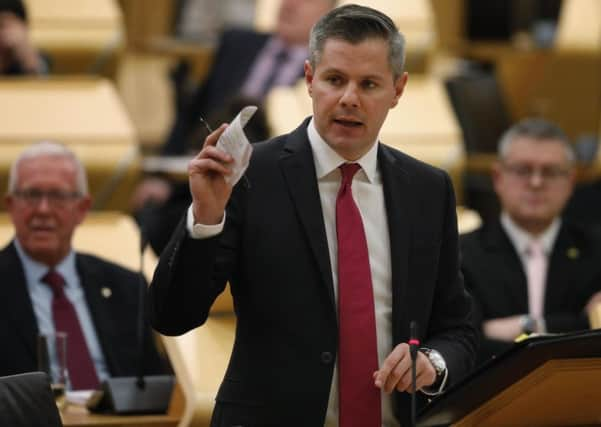John McLellan: No easy fixes for this New Year headache


But for the city council’s administration, it’s going to take a lot more than a couple of Alka Seltzers to deal with the crippling migraine which is the budget for the coming year and giving up drink for a month is the least of the habits which need to be broken if the books are to be balanced with £50 million less to play with.
Edinburgh was already facing budget cuts of £28m for 2019-20, but with £10m still needing to be found from the current year’s commitments, the true figure was nearer £40m. There had been some belief that council leader Adam McVey having the ear of Finance Secretary Derek Mackay would mean that the difficulties facing the Capital and other local authorities would be recognised, but the result has been the exact opposite.
Advertisement
Hide AdAdvertisement
Hide AdThe irony is the council’s cash is being slashed when the Scottish Government has more money to spend because the Scottish block grant after adjustments will increase by £1,602m in 2019-20.
Not only did further cuts go deeper than anyone expected, but the city’s panacea for everything, the tourist tax, didn’t feature in Mr Mackay’s budget speech. Even if it did, with the council predicting an income of approximately £11m a year from its preferred scheme of a £2-a-head-per-night tariff, the money has already gone. So even if the tourist tax was introduced tomorrow, there would be no benefit whatsoever for the city’s tax-payers or the services they receive.
No matter, the tourist tax is not coming any time soon so the £50m must be found from somewhere within existing resources. The brutal reality is, with the council tax increase capped at 3 per cent and already accounted for, there are only two other places to look if the impact on services is to be minimised: managerial and administrative staff and buildings. This no doubt why early leaks have suggested that library closures are back on the agenda and it would be foolish to deny that with a financial crisis of this scale that libraries could be exempted from a review of the council’s assets.
Schools, libraries and community centres will all need to be reappraised, but the priority will obviously need to be the preservation of services and the preservation of the buildings themselves will be a secondary consideration.
Advertisement
Hide AdAdvertisement
Hide AdThere is a realisation that much of the council’s facilities are under-used and inefficiently run, but changing systems and habits is not easy as the janitorial review of schools and community centres showed, with the accompanying difficulties with school lettings. For every rationalisation and closure there will be consultations and, doubtless, protests.
The abandoned plan to close Currie High School and the Wester Hailes Education Centre and the associated expansion of Balerno High and construction of a new school in Clovenstone is an example of how local concerns can derail what on paper made sense to education chiefs. Similarly, the proposal to shut the specialist music school at Broughton High in 2017 was scrapped in the face of, so to speak, vocal opposition.
Even the demolition of St John’s Primary School in Duddingston, a plan which had faced virtually no opposition for years, at the last minute ended up in bitter accusations of cultural vandalism because the council wasn’t prepared to reverse a decision which would have cost it hundreds of thousands of pounds it didn’t have then and certainly doesn’t have now.
If the new cost-cutting targets are to be met – and by law the council administration has no choice but to deliver a balanced budget – then expect more of the same. Unless something drastic happens, this time there will be no reprieve. And it won’t be Westminster’s fault.
Room at the top
Advertisement
Hide AdAdvertisement
Hide AdReshaping buildings will take time Edinburgh Council can’t afford, so the only alternative is cutting staff. Salami-slicing individual services only goes so far, so it has to begin at the top.
Management will point to the non-replacement of communications chief Simon Higgins as a start, but that was an opportunity, not a decision. When managers are asked to find savings in their departments, they tend not to look in their own rooms.
The problem-ridden joint Council-NHS Lothian health & social care service aside, Edinburgh Council is split into four super-departments: central administration under the chief executive plus three other powerful directorates.
Each has a team of managers responsible for individual services and their responsibilities are sub-divided. For example, the officer responsible for emptying your bins reports to the head of waste services who reports to the Director of Place who reports to the Chief Executive.
Advertisement
Hide AdAdvertisement
Hide AdThat multiplies out to virtually every service; add another managerial layer from the complex new localities system and the whole thing looks top-heavy. Then there is management support: staff to take notes, to write up reports, to make their appointments, all working hard to meet the boss’s needs but often tasks managers could do themselves.
Some insiders believe the cuts can be achieved without further damage to services, but it will take a massive upheaval in the way the council is run and job losses are inevitable. How that squares with a policy of no compulsory redundancies is anyone’s guess.